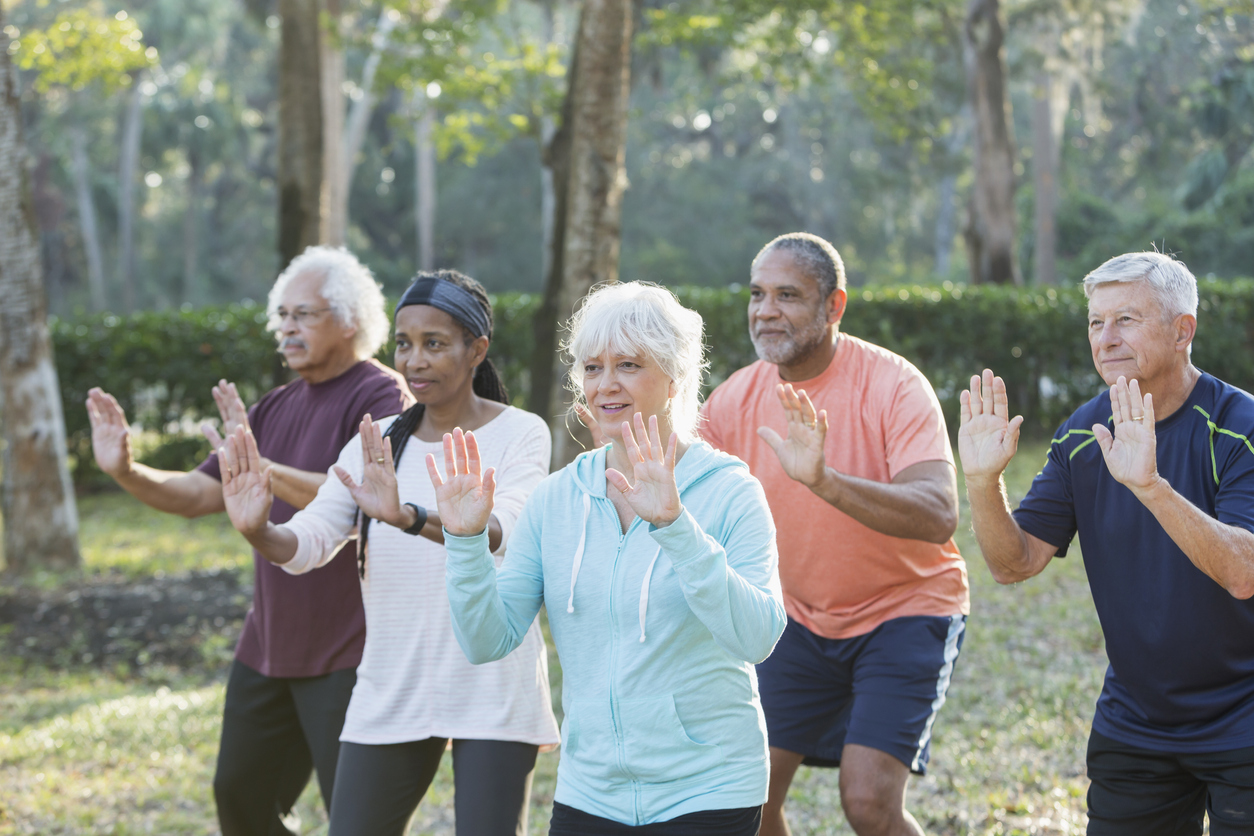Often, people with fibromyalgia are told about the benefits of aerobic exercise. Research shows the benefits of aerobic exercise are so clear and strong, that it has become a standard recommendation for anyone looking to improve fibromyalgia pain management.
But we know that for people living with chronic pain, movement can be challenging if not a little scary. And for those who are having trouble progressing with aerobic exercise, other options are available that use gentle, low impact movements focused on the mind-body connection.
What is Tai Chi?
Tai Chi, an ancient Chinese practice, is an low-impact set of movements that is linked with deep breathing. Perhaps you’ve seen someone practicing it. It looks like martial arts in slow motion. And that’s because it was originally developed for self-defense, but over the years has developed into a series of gentle, flowing movements.
Tai Chi has been associated with a number of health benefits like providing pain relief and improving mental health. It’s no wonder that it has become a go-to for people with chronic pain. Tai chi can be practiced in pretty much any setting — at home in your living room, in a break room or courtyard at work, or in a group setting, like taking structured tai chi classes.
Comparing Tai Chi to Aerobic Exercise
A 2018 academic paper was interested in how the health outcomes of individuals with fibromyalgia that participated in moderate aerobic exercise* were different from with those who practiced tai chi*.
So what did they find?
- Although everyone showed improvement, the people who practiced Tai Chi showed similar or greater improvement in function, mood, sleep and reduced symptoms as compared to those who engaged in aerobic exercise.
- Those who practiced Tai Chi for a longer period of time (6 months versus 3 months), they saw greater improvements. How often a person practiced — 1 day versus 2 days– didn’t seem to matter. Interestingly, attendance in the Tai Chi classes was higher week over week compared to the aerobic exercise groups.
- In both groups — aerobic exercise and tai chi — the use of pain medications fell over time.
In summary, for those who are living with fibromyalgia, any movement is better than no movement at all.
If aerobic exercise is working for someone, they should keep doing it! But if a gentler form of stuck in a rut and looking for a new approach to moving, consider trying Tai Chi. You may be surprised at how much you enjoy it!
*Tai Chi groups (60 minutes, once or twice a week for 12 or 24 weeks).






